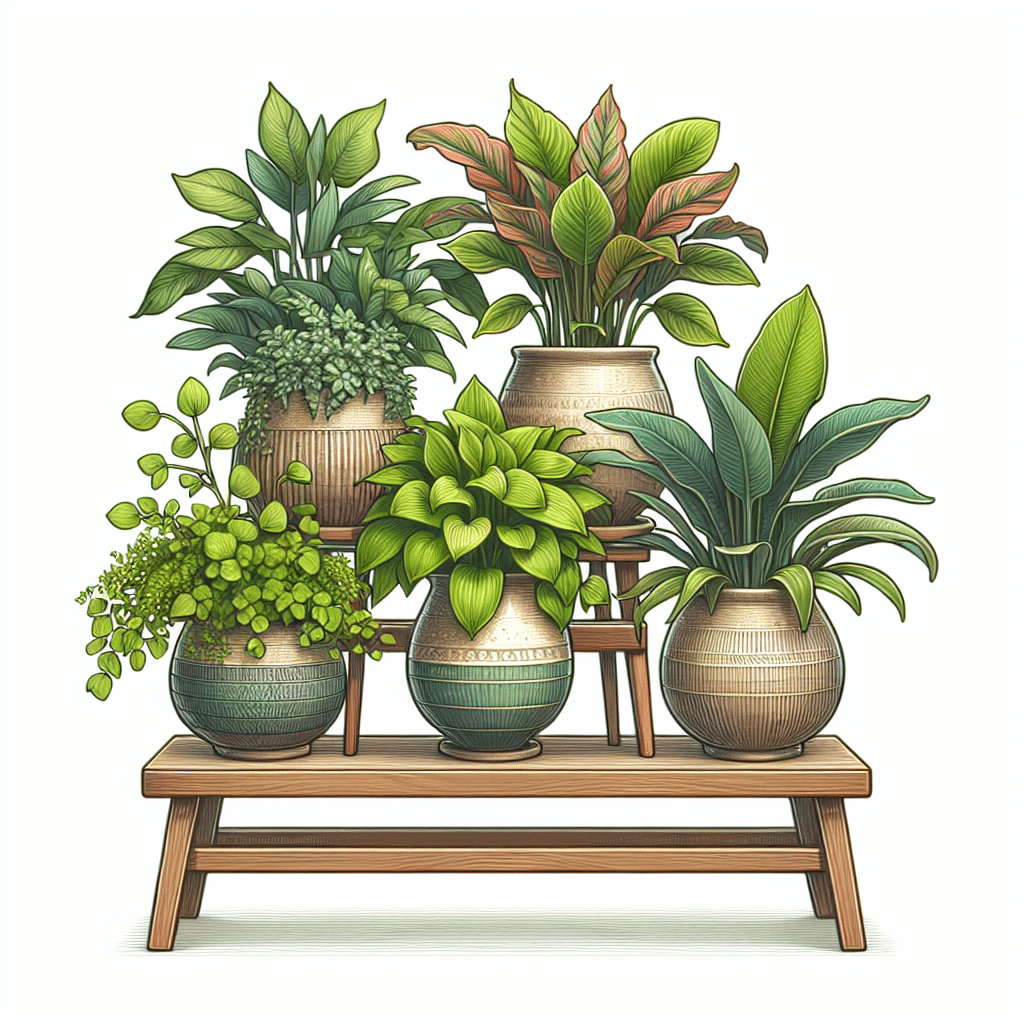Best Plant Pots for Air-Purifying Indoor Plants
Understanding Air-Purifying Plants
Air-purifying plants play a vital role in improving indoor air quality by removing toxins and releasing oxygen. Popular choices include Spider Plants, Snake Plants, Pothos, and Peace Lilies. However, the right plant pot enhances these plants’ growth and overall appearance. In this guide, we delve into the best plant pots for air-purifying plants, considering materials, drainage capabilities, and aesthetic value.
1. Terracotta Pots
Material and Benefits
Terracotta pots are made from porous clay, allowing for excellent aeration and drainage. These characteristics help prevent overwatering, making them a favorite for many houseplants, especially those that prefer drier conditions, such as Snake Plants and Cacti.
Best For: Drought-tolerant plants and succulents. The natural, earthy look of terracotta also complements the lush greenery of air-purifying plants, enhancing interior aesthetics.
Drawbacks: The porous nature means that they can dry out quickly, necessitating more frequent watering. Moreover, the exterior may develop mold or algae in humid environments.
2. Ceramic Pots
Material and Advantages
Ceramic pots are heavier, often glazed for aesthetics and to prevent moisture loss. The glazed interior retains moisture longer, making them suitable for for plants like Pothos and Peace Lilies, which prefer consistently moist soil.
Best For: Humidity-loving plants. The variety of colors and designs available ensures that you can find one that fits any room decor, enhancing the visual appeal of your space.
Drawbacks: Their weight can make them cumbersome to move, and if not carefully selected, cheaper ceramic pots may not have adequate drainage holes.
3. Plastic Pots
Material and Features
Lightweight and versatile, plastic pots are often used in nurseries for shipping plants. They come in various sizes and colors, making them an affordable option.
Best For: Nearly all indoor plants. Their lightweight nature makes it easy to rearrange your plants based on seasonal decor or sunlight availability.
Drainage Importance: However, make sure to choose pots with sufficient drainage holes to avoid water pooling, which can harm your air-purifying plants.
Drawbacks: Cheap plastic can deteriorate in sunlight, and lower-quality options may not be aesthetically pleasing.
4. Self-Watering Pots
Innovative Features
Self-watering pots are designed with a built-in reservoir that allows plants to absorb water as needed. This is ideal for busy individuals who may forget to water their plants regularly.
Best For: Peace Lilies and Bamboo Palms, both of which thrive with consistent moisture.
Advantages: These pots also prevent overwatering, thus improving root health.
Drawbacks: Initial costs may be higher compared to traditional pots, and the design may not appeal to minimalist aesthetic preferences.
5. Biodegradable Pots
Eco-Friendly Option
Biodegradable pots made from materials like coconut coir or recycled paper are becoming increasingly popular, aligning with eco-conscious consumer preferences. They provide adequate drainage while being environmentally friendly.
Best For: Beginners and those looking for green solutions to houseplant care. They are excellent for starting seedlings of air-purifying plants before transitioning them to larger pots.
Drawbacks: They have a limited lifespan and are not suitable for long-term use, as they will break down over time.
6. Metal Pots
Durable and Stylish
Metal pots, like those made of galvanized steel or aluminum, offer a modern aesthetic that fits well in contemporary or industrial-style spaces.
Best For: Some air-purifying plants such as Spider Plants, which can thrive in diverse potting conditions.
Considerations: While metal pots are stylish, they can overheat in direct sunlight, potentially harming the plant roots. They generally require additional drainage considerations to prevent root rot.
7. Hanging Pots
Space-Saving Solution
Hanging pots add vertical interest to your indoor plants. They are particularly effective for trailing plants like Pothos and English Ivy, which purify the air while providing natural decoration.
Advantages: Hanging pots save floor space and allow for creative arrangement in any room.
Best For: Areas with limited surface space, such as kitchens or small apartments.
Drawbacks: Ensure that the pot has a secure hang mechanism and that the plant can thrive in the height and light of its placement.
8. Terrariums
A Unique Approach
Terrariums are glass containers that create a mini-ecosystem, providing plants with humidity and moisture. They can be beneficial for maintaining high humidity levels essential for many air-purifying plants.
Best For: Small plants like ferns and mosses, which thrive in humid environments. They also allow you to display your plants creatively.
Drawbacks: Maintenance can be tricky; terrariums require careful monitoring of moisture levels and can sometimes promote mold growth if not ventilated properly.
Selecting the Right Pot Size
When choosing a pot for your air-purifying plants, size matters. A pot too small may restrict root growth, while an oversized pot can retain too much moisture, leading to root rot. Vegetables and actively growing plants appreciate slightly larger pots, while mature or slow-growing plants benefit from snug fits.
Drainage and Maintenance
Regardless of the pot type, ensure proper drainage. Look for pots with drainage holes or consider adding a layer of pebbles at the bottom of pots without holes. Maintained drainage helps to keep soil healthy and reduces the risk of fungal issues associated with standing water. Regularly check for clogged drainage holes to ensure that water flows freely.
Aesthetic Considerations for Home Decor
Aesthetics play an essential role in choosing the right pot. The design and color should complement your home decor. Dark pots often contrast well with bright green leaves, while lighter pots add a touch of brightness. Consider using pot covers or planters as decorative elements to enhance your air-purifying plants’ look without compromising their health.
Final Thoughts
Selecting the best pot for air-purifying indoor plants involves considering the plant type, pot material, drainage capabilities, and aesthetic appeal. By opting for the right pot, you can enhance the beauty and health of your indoor garden, creating a refreshing and vibrant living space that contributes positively to your indoor air quality. No matter which style you choose, the right plant pot can be a perfect complement to your air-purifying green companions.
